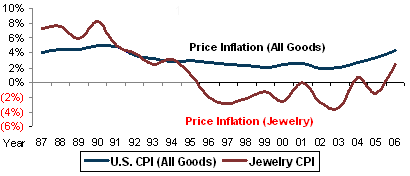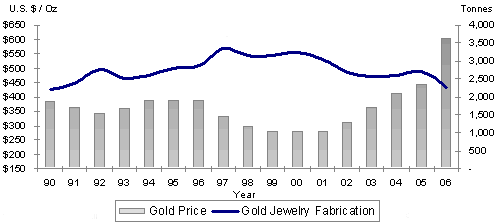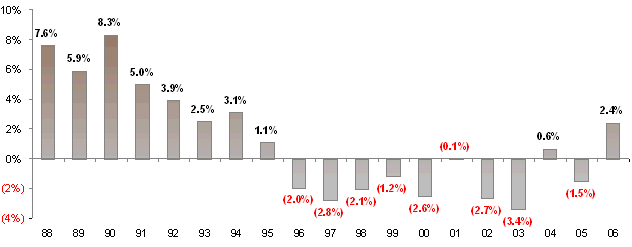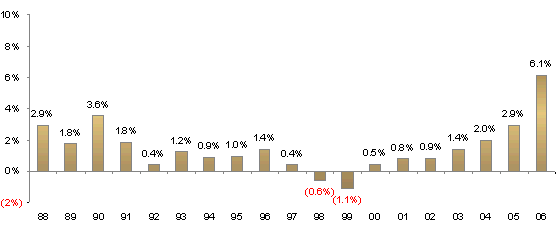IDEX Online Research: Specialty Jewelers Challenges - Lack of Pricing Power
May 23, 07
In the third analysis of this series, IDEX Online Research analyst Ken Gassman examines the challenges lack of pricing power poses to Specialty Jewelers in the U.S.
Despite a 6.1 percent increase in wholesale jewelry prices in the U.S. in 2006, jewelers were able to raise their retail prices by less than 4 percent. As a result, jewelers’ gross margins have been under pressure (see graph in the first article of the series ‘Financial Deterioration’).
Because the retail jewelry segment is so highly fragmented without any dominant retail chains, the industry lacks pricing power. In addition, far too many jewelers rely on price-based marketing tactics to sell goods. Finally, because jewelry is a discretionary purchase, shoppers will cut back on jewelry purchases when prices climb rapidly; this happened in 2006 with gold jewelry when the price of gold rose above $600 per ounce. Retail prices of jewelry in the U.S. have declined for nine of the past nineteen years, as the graph below illustrates.
| U.S. Consumer Price Index for Jewelry |
Jewelry prices at wholesale have continued to rise every year since 2000, as the graph below illustrates.
| U.S. Producer Price Index for Jewelry |
The U.S. retail jewelry industry lacks pricing power which is enjoyed by so many other retail categories such as consumer electronics (Best Buy / Circuit City), home improvement supplies (Lowe’s / Home Depot) and others in retail segments which are far less fragmented. Because the U.S. jewelry industry is so fragmented, no single jewelry retailer can set the pace for price changes.
Unfortunately, retail prices for jewelry have been slumping while retail prices for most other consumer product categories have continued to rise steadily, as the graph below illustrates.
Price Inflation - All Consumer Goods vs Jewelry
1987 - 2006
Source: U.S.Dept of Commerce
Because jewelry is a discretionary purchase, it is possible to calculate the retail price “choke point” at which consumers cut back on their jewelry purchases in some categories. For example, when gold rose above $600 per ounce in 2006, consumer demand for gold jewelry softened significantly. As the graph below illustrates, gold demand for jewelry (in tons) began to decline around 2000, just as gold prices began to rise. In 2006, gold demand for jewelry declined by 16 percent from 2005 (in tons), while the price of gold rose 36 percent in the same period.
Gold Prices & World Gold Jewelry Fabrication - Actual & Estimated
Average Annual Price of Gold in U.S. Dollars per Ounce
Gold Jewelry Fabrication in Tonnes
Source: World Gold Council
Next in this series: Loss of Market Share & Share of Wallet

